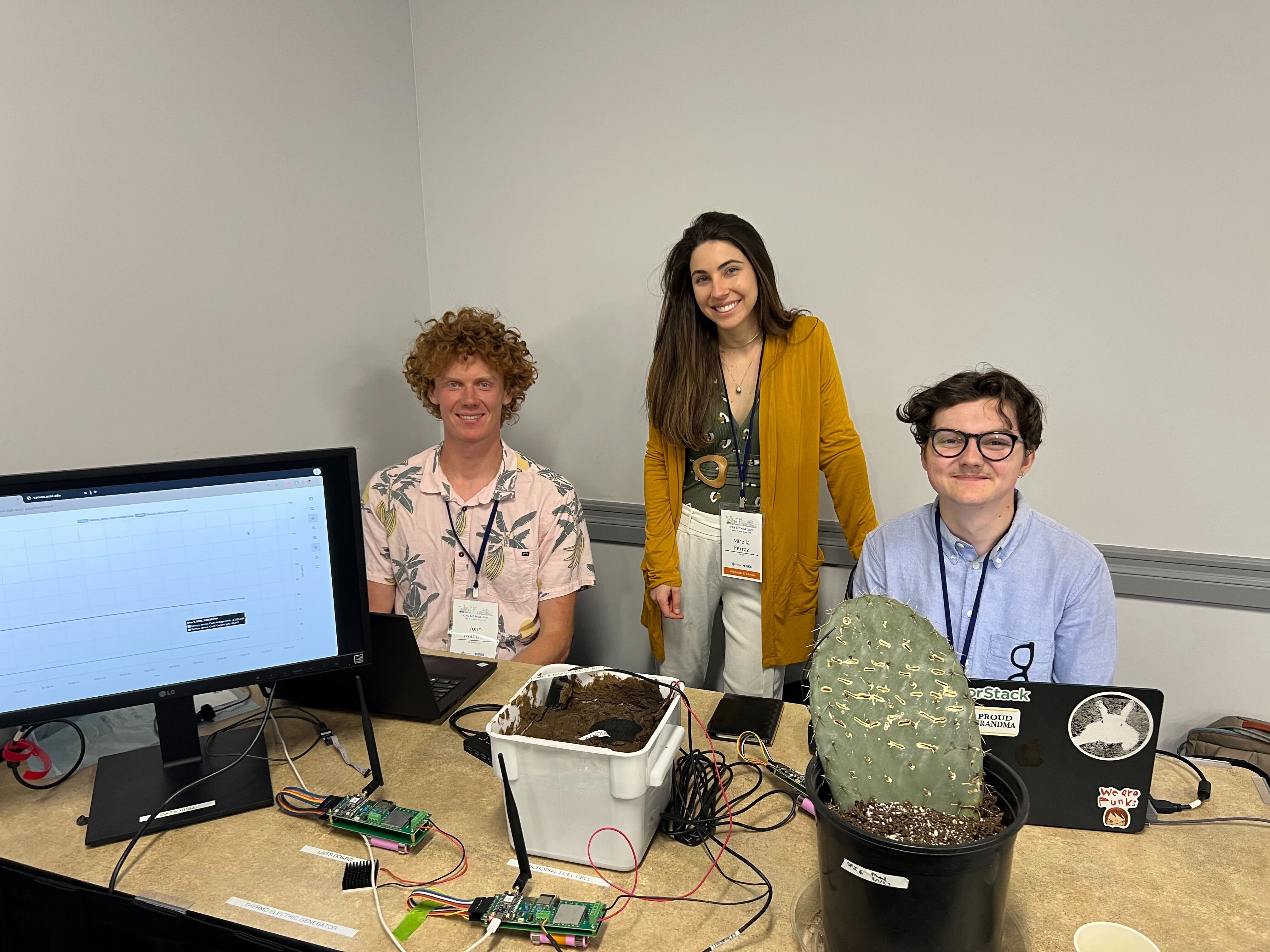2025 SenSys: Day 1
Today was the first day of the main conferences for CPIoT week 2025. I mainly attended SenSys talks throughout with notes from the presentation below. You should be able to look up the conference papers and find them listed on the ACM website. Two lab members and myself got the opportunity to present our work at the demo section.

Keynote Speaker (AI on Mars)
See https://ai.jpl.nasa.gov/ for more information.
- Previously time tagged commands that the rover followed exactly
- “Trusted AI”, rover makes decisions on its own thrroughout the day
- Replanned over 7000 times equivalent to 500 plans on old system
- significant improvements in resource efficiency
- If you rover sleeps and doesn’t wake up, then the mission is over
- Important to do full lifecycle testing
- On board planner (OBP)
- Hnadles adjusting the mission plan
- Extremely energy constraint environment (250 Wh per day)
- Decreases power generation 4% per year
- The leads connected to the thermal generator degreate
- Plutonium decays far slower
- Compute is also limited due to legacy space grade hardware
- Goals for OBP
- Invoke the scheduler as little as possible
- Handle thermal management
- Efficiently handle awake and sleep cycles
- Didn’t go directly to the rover, first implemented on sat
- More planners in 2025
- Moonrider
- Another one I didn’t get
- Built computational complexity of model to guarentee termination
- Software development
- 1/3 dev
- 1/3 V+V (verification and validation)
- 1/3 everything else
- V+V main driver of development
- 80% of the code is autogenerated and corrected by synthesis
- Deployed OBP in 2023, originally planned in 2020
- Went from taking a picture at 10am to acceptable range, light to take a picture
- Getting close to 10% power efficiency improvements
- Other AI on rover
- OBP
- Enav Autonomous Driving
- AEGIS Auonomous Targetting
- PIXIL Adaptive Samplinga
- Global Localization (coming soon)
- Future work
- FAME (Federated Anomous Management)
- Can be used to adapt sats to monitor natural disasters
- Autonomy used to find other life
- FAME (Federated Anomous Management)
mmWave & Radar-based Sensing
Argus: Human mesh reconstruction with mmWave (Di Duan)
- mmWave is accurate enough to support fine grained estimation of human pose
- Radar is placed on the human to reduce noise
- Uses multiple smaller radar with limited sensing capabilities
- Use energy consumption to account for occlusion
- NN used to construct mesh from IMU and radar
Ultra-High-Frequency Harmony: Accurate drone landing (Haoyang Wang)
- Applications for delivery, industrial, agriculture
- Worked with Meituan, drone delivery from Chinaa
- Accurate landing at a warehouse, or company landing site
- cm-level accuracy with update rate greater than 150 Hz
- Sensor fusion between mmWave and camera for depth estimation
- Not good enough
- Event camera used instead of frame camera
- mmE-Loc
- 0.13 mm localization error for outdoor experiments
mmWave Radar-based eye tracker on Glasses (Ruichun Ma)
- From meta labs
- Existing approaches
- NIR LEDs and cameraas
- Web Cameras
- Acoustic
- Lower power consumption, compact, not impacted by sunlight
- Use averaged chirps to get better accuracy
- Implement “soft” beam forming with weights controlled by a ML
- Uses ResNet-18 to estimate the gaze detection
- Accuracy of 1.49 deg error, after remounting 4.4 deg
- 20 minutes of data per user
- Under the IEEE standard for maximum radiation
Proteus: mmWave Leaf Wetness Detection (Yimeng Liu)
- Care about leaf wetness duration
- Exiting work uses SAR
- mmLeaf @ MobiSys 2025??
- Hydra @ MobiCom 2024
- Leaf characteristics can effect the accuracy of radar sensing
- Uses NN with teacher student feature extraction
- Ground truth against
- Handheld moisture meter
- Phytos31
- Something like 97% accuracy compared to ~70% from Phytos
BeamMsteerX (BMX): Hand hygiene (TBD)
- Long range, robust, privacy-safe monitoring
- Target 1.5 m for accurate micro hand gesture
- Uses deep learning to convert radar into gesture
Telos: Enabled low-power measurement device
- Isolation between subsystem with hardware latch
- Set and forget programming
- Uses 802.15.4
- Based on MSP430
- XBee a newer comericial option
Demos
- CIGAR: Batteryless sensing
- Fingerprint scanner for on-body messaging
- PaSED: Objeect detection alternative to YOLO
- I4C: Choosing ideal pull up resistor on the bus
- Soil component sensing via VNIR and LoRa (Yuanlin Yang)
- C-Shenron: Realistic Radar Simulation framework for CARLA
- mmWave sub arrays for joint communications and interface suppression
- Multiscale Vibration Sensing for Activity Vital Signs Monitoring in Pig Pens
- SRAM PUF-Based Login Locking for Secure Authentication and IP Protection
- Real time UAV tracking with mmWave radar
- Scalable 3D Gaussian splatting-based RF signal spacial propagation model (Kang Yang)
- Relevant to lab member
- Low-cost soil sensing and two-level classification for early stress detection in Avocado plants (Abdulrahman Bukhari)
- Non-Intrusive Speaker Diarization via mmWave sensing